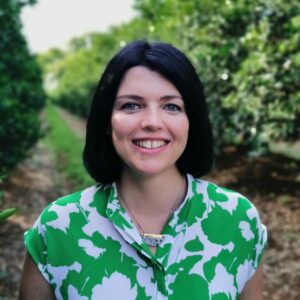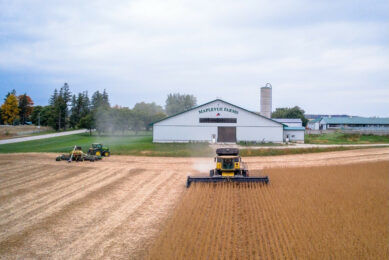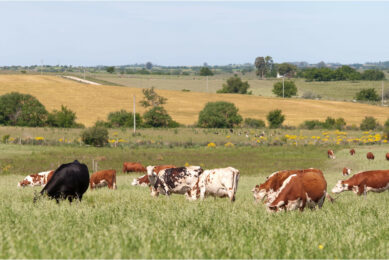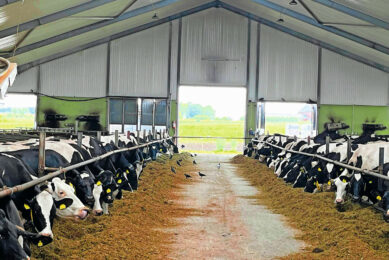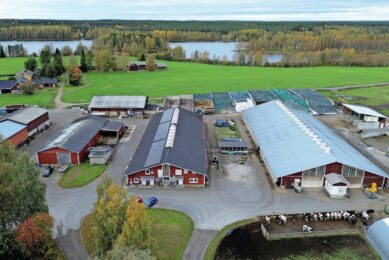Striving for a balance for high milk production
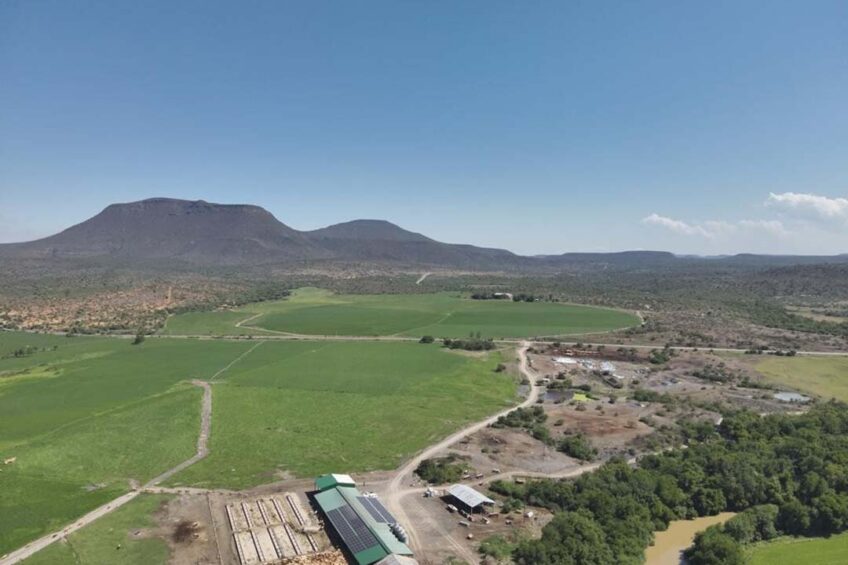
The warm climate in Weenen, South Africa, means pasture growth is quick and ample. Managing heat stress, however, along with other typical challenges of this region, requires thoughtful stewardship.
The Foundation Farm dairy is a green oasis in an over-grazed landscape in KwaZulu-Natal, South Africa. With average rainfall of around 700 mm per year, the natural pasture could provide ample food for livestock. But without careful management, the land can become barren, as dairy farmer Barry Schiever has witnessed.
Schiever grew up on a dairy farm and followed his father’s footsteps into the business. When he met his wife, the daughter of dairy farmers Alan and Frances Webster, he had the opportunity to take over their farm, which they had spent a lifetime nurturing. Sharing the same goal of growing the dairy, the team worked to increase the Jersey herd from 450 to 1,250 cows.
Managing the pasture to gain the maximum feed from the land has been a primary goal, one which Schiever has achieved through soil management. “Healthy soil ensures a more profitable dairy,” he says. “We have seen a substantial difference in how well the pasture grows in soils where we have been able to increase the carbon percentage.”
Slurry tankers spread manure on the fields daily, following behind the grazing cows. Gypsum is added where needed, and land is never allowed to lay bare. Where silage has been cut, cover crops are immediately planted. These combined efforts have taken the organic carbon content of the soil from below 1% to around 5% in less than 10 years. This is a remarkable feat, considering that the average organic carbon content of farm soils in South Africa is less than 1%.
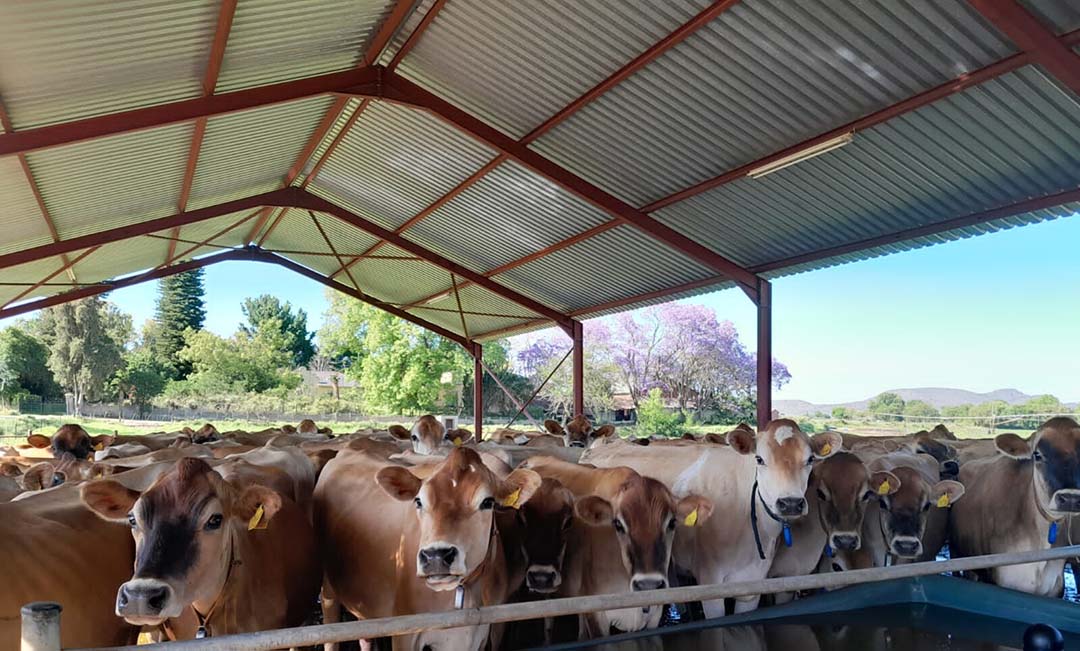
Working with the heat
Foundation Farm’s location means that heat to push pasture growth is ample. Schiever notes that temperatures reaching up to 45°C in summer means that pasture grows back quickly after being grazed. In spring, cows can return to the same field 16 days after grazing. Winter, when temperatures can dip to -2°C, has a maximum of 21 days between grazing, which is half the time needed in colder areas of South Africa.
In addition to the rain, the Bushman’s River provides ample water for irrigation.
The fields consist of mixed pasture replanted annually to lucerne and clover to fix nitrogen into the soil, deep-rooted crops like chicory that can handle the heat, and ryegrasses in the winter. Cows are then stocked at a rate of 5 to 5.9 cows/ha. “This is high,” says Schiever, “but one needs to take into account that the Jersey is a smaller framed animal. At this rate we get a good return on investment per hectare.”
Heat can, of course, work against dairy farmers, and Schiever has had to ensure that cows remain comfortable when temperatures peak. “Cow comfort is important to production, so we recently erected a roof over the area where the cows stand waiting to be milked. When it is very hot, we bring them off the pasture earlier and place them in a shaded area where a fine sprinkler system cools them off.”
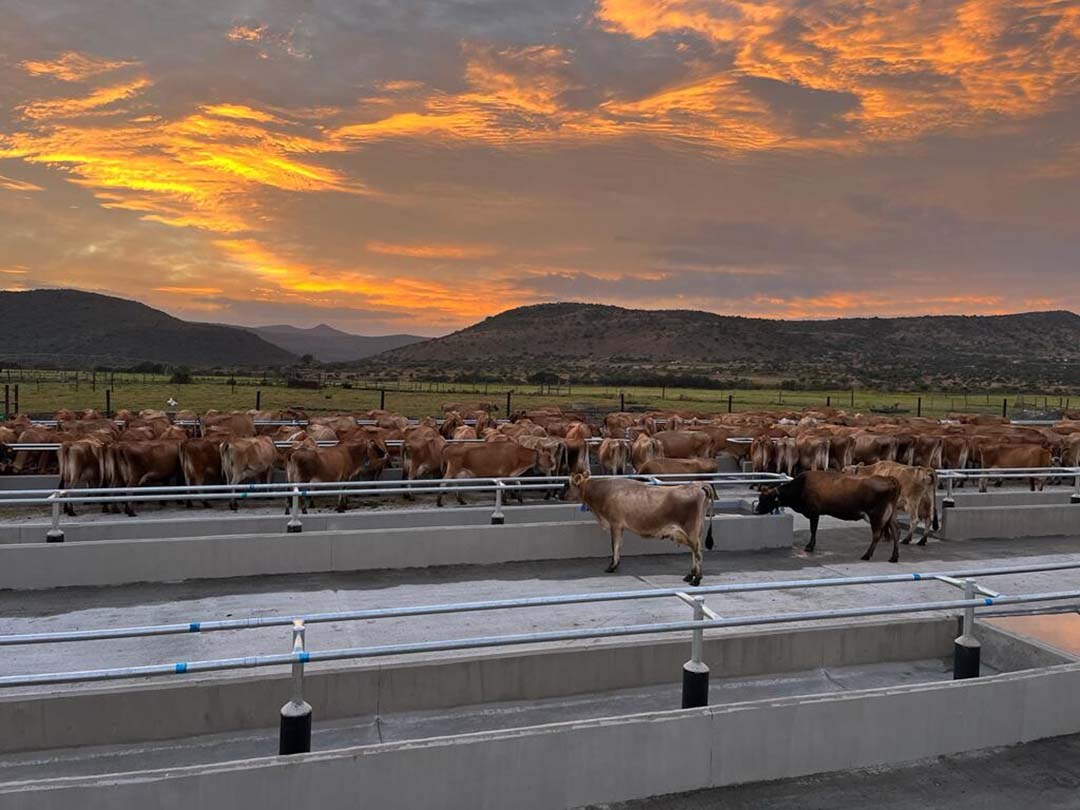
Year-round production
To meet market demands, Schiever milks year-round, with calving seasons in spring and autumn. Cows are kept for as many lactations as possible, with the longest being 11, and the average being 5.
A breeding programme is followed using mostly semen imported from Canada, where Schiever believes Jersey genetic progress is more advanced than in South Africa. Cows are artificially inseminated with genetics that are selected to prevent inbreeding and ensure maximum production.
Schiever strives for a balance to ensure high milk production and longevity. “We have decades of records that show trends that can be linked to certain genetics. This way we have a clearer idea on what will work on our farm, and what will not.”
Milk recording
The Websters started milk recording in 1990, to which the family attributes much of their success in growing the herd and its performance. Schiever says that they are of the few farmers in the area that do milk recording, and although the process is laborious and time-consuming, the results are worth it. The herd’s cell count is consistently below 250,000.
“Milk recording has assisted us in keeping our herd’s somatic cell count low, which means we have been able to better manage antibiotic usage. We can dry off our cows using a teat sealant, and often only an entry level antibiotic. We can also see which cows responded well to which antibiotics, so decision-making becomes easier,” says Schiever.
He adds that the system has highlighted many trends over the years, the insight of which is irreplaceable. “I can spot a mastitis infection in a cow before she even shows symptoms, which means she can be treated quicker, and can return to production faster.”
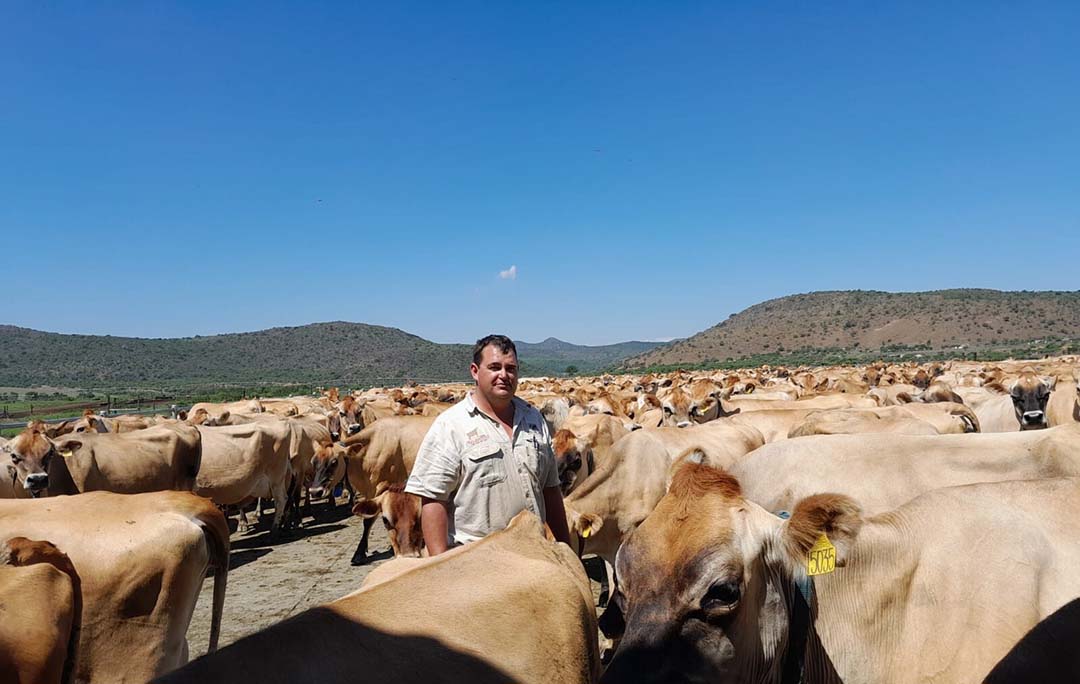
Community cooperation
Part of being a responsible farmer in South Africa entails consideration for the greater community, especially with regards to employment. The high unemployment rate (over 50% across South Africa) means that job creation can take precedence over investments in climate change risk management. For the Foundation Farm team, keeping the 50 permanent staff members employed and motivated is a high priority.
“We have been given the opportunity to provide jobs through our business, and we believe it is our social responsibility to do so. Yes, there are times when you feel your business can’t afford it, but in the end, it is all worth it,” smiles Schiever.
Managing community relations goes beyond offering employment. For Schiever, it also means dealing with community unrest caused by lack of service delivery from the local municipality. In such cases roads are blocked during violent protests, preventing milk tankers from transporting milk. Schiever and the Websters have had to establish good relationships with local chiefs in the community to allow the tankers to pass through in such instances, lest the milk spoils. “There is a growing understanding that in order to supply jobs, we need to be able to get our milk to market and keep the dairy running successfully,” Schiever explains.
Growing the herd to 1,600 cows is the next goal on Schiever’s plan for Foundation Farm. While he shares the challenges that many farmers globally face – tighter margins – he is confident that through responsible management he can pass on to the next generation a better farm than the one he received.


